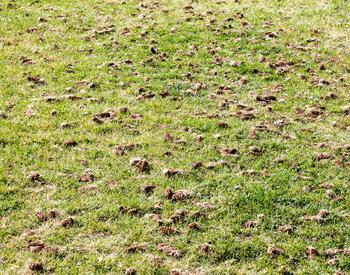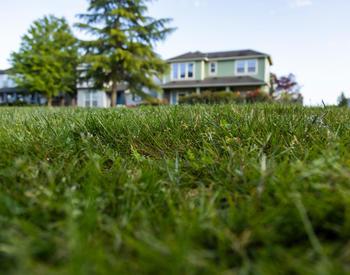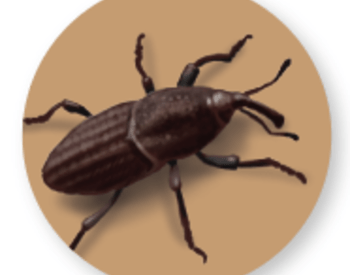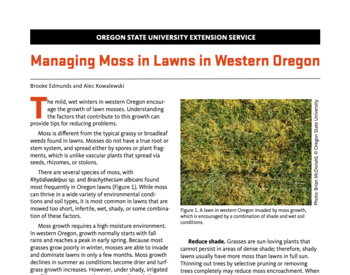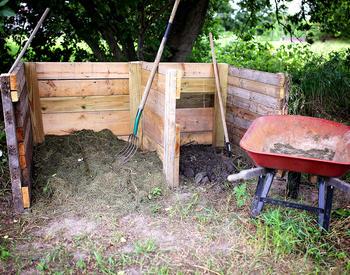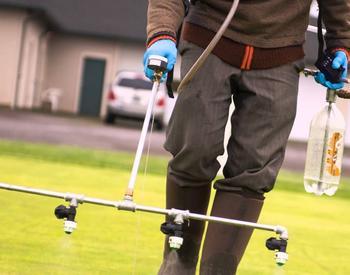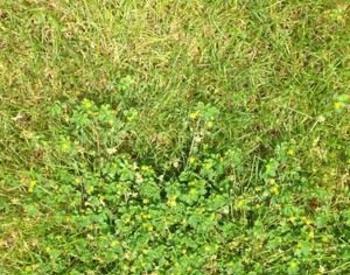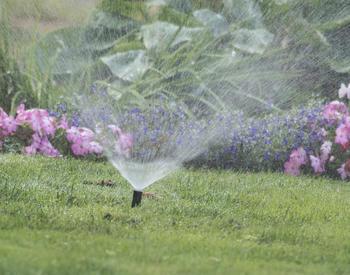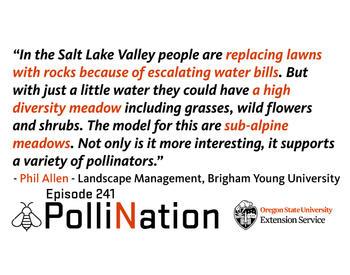[MUSIC PLAYING]
The mild, wet winters in Western Oregon
give us lush, green lawns.
But the weather also encourages the invasion of mosses.
To prevent mosses in your lawn, it's
important to understand the factors that
encourage moss growth.
Moss is different from the grassy or broad leaf
weeds found in your lawn.
For example, moss doesn't have a true root
or stem system and moss spreads by spores or plant fragments.
Moss needs lots of moisture to grow.
In Western Oregon, it normally starts growing during the fall
rainy season and reaches a peak in early spring.
You can prevent moss from growing in your lawn
by keeping your turf grass dense and healthy year round.
Here are some things you can do.
First, prune or thin trees to provide your lawn
with plenty of sunlight.
Then install drain tiles or catch
basins to make sure your lawn has good drainage.
It is important to mow and irrigate
your lawn in the summer because this will help prevent moss
from getting established.
And it's also a good idea to test your soil.
If the soil pH is too acidic, you should apply lime.
Finally remember to fertilize your lawn four times a year.
All of these practices will promote healthy turf grass
that is more moss-resistant.
If these practices aren't enough to keep moss
from going in your lawn, you might
want to consider other approaches like de-thatching
or using chemical herbicides.
De-thatchers physically remove the moss from your lawn.
You can de-thatch using a rake or by renting
a de-thatching machine from an equipment supply store.
You can find chemical moss control products
at home and garden stores.
These products include non-selective herbicides,
potassium salts of fatty acids and sulfur-based fertilizers.
Always read the pesticide label and follow the application
and safety instructions.
Keep in mind that products to remove moss from roofs
are not the same as the ones used on lawns.
They cannot be used interchangeably.
If you remove the moss with a de-thatcher or with herbicides,
the lawn will have bare areas.
To avoid re-invasion by moss and other weeds,
it is important to fertilize and inner-seed the lawn.
For sunny lawns, seed with perennial rye grass.
For shady lawns, use a mixture of perennial rye grass and fine
fescue.
To prevent future moss infestations,
be sure to mow weekly, fertilize four times a year
and irrigate frequently in the summer months.
For more information on managing moss in lawns,
refer to the OSU extension publication, Managing Moss
in Lawns in Western Oregon, or visit with your OSU Master
Gardener volunteer.

